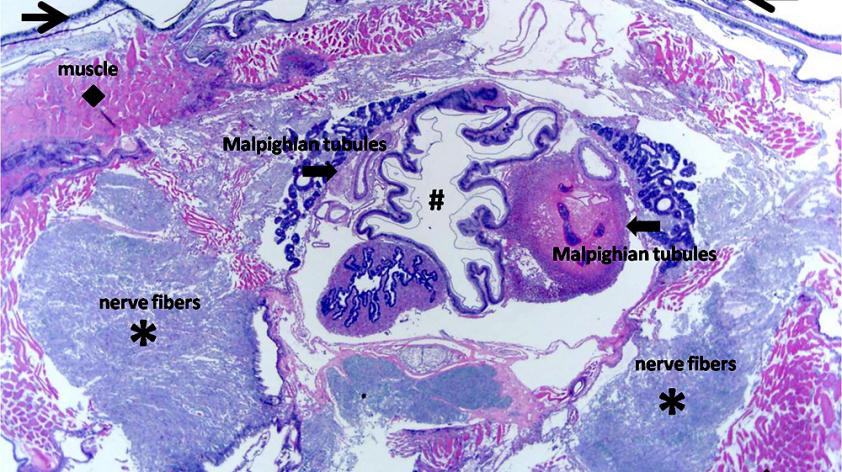
Lions and Tigers and… Giant African Millipedes? Oh My!
When I woke up on a beautiful Monday morning in August, I had no idea the day would be like no other. It started off in the normal way: breakfast, freeway traffic, searching for a parking spot, etc. Once at work, I sleepily shuffled though the day’s submission forms and suddenly my eyes popped wide open: giant African millipede!
I am a pathology technician in the Wildlife Disease Laboratories at the San Diego Zoo. Every day, I need to be ready to perform a post-mortem examination, also known as a necropsy, on any animal that passes away at the Zoo or Safari Park. Over the years I have become familiar with the usual suspects (mammals, amphibians, reptiles, and birds) and their widely differing anatomy. The biggest challenge I’ve found is differentiating between normal and abnormal anatomy in all of these species; yet as I have gained experience it has become easier.
I never thought I would be performing a necropsy on a giant African millipede, or any invertebrate (animal that doesn’t have a backbone) for that matter! As I stood there staring at the creature before me, with its hundreds of legs and little beady eyes, my mind was a total blank. I had never done an invertebrate necropsy and nothing in my past experience had prepared me for this. My excitement grew, followed by uncertainty. How does one perform a millipede necropsy? Where do I start? What am I going to see?
After the initial shock, I began as I would with any other necropsy by making a slice down the ventral surface (underside) of the millipede. What I saw was perplexing and a little anticlimactic. There was basically a long tube-like structure filled with dark brown, gritty material down the length of the body with brown to tan gooey material on either side. That was it. I had no clue what I was looking at, what the organs were and where the organs were located. How was I going to differentiate normal from abnormal? Things I would commonly look for are asymmetry of the legs and body, abscesses, perforations, or unusual growths. In this case, there were no visible red flags to alert me of any abnormality. At the pathologist’s instruction the entire millipede was saved in formalin for further processing. What now?
Not everything can be seen with the naked eye, but astonishingly, under a microscope, the gooey material is actually composed of multiple cells and organs that can be identified. After fixation, the millipede was cut like a loaf of bread and paper-thin slices were placed on microscope slides. Using the standard hematoxylin and eosin stain the cells are discernible, with each tissue type staining differently. Thanks to help from Dr. Jennifer Bernard, I was able to see some of the microscopic anatomical regions. To me, it looked like pink and purple chaos; but to the pathologist it is a complex arrangement of muscle, nerve fibers, and digestive glands, all surrounded by the exoskeleton. The long tube-like structure turned out to be the digestive tract (labeled as “#” in the photos at left and below). There are glands on each side of the digestive tract, known as Malpighian tubules, which perform a function similar to the mammalian kidney.
As you may notice, the Malpighian tubules on the right and left look different. The Malpighian tubules on the right are expanded by dark pink to purple material while the one on the left is smaller and more of a pale purple. This asymmetry is a sign that something could be abnormal. Upon higher magnification, the right Malpighian tubules are full of invertebrate inflammatory cells, also known as hemocytes, and clusters of bacteria. Cause of death: bacterial infection!
While not currently endangered, giant African millipedes are a vital species on the African rain forest floor. Here at the Zoo, it is important to monitor for disease within our collection and also gain more knowledge that can help us in any future conservation endeavors. The giant African millipedes are located in the Insect House at the Zoo and within the Safari Park’s Hidden Jungle Crevasse. Next time you plan a visit, make sure to take time to check out these creepy-crawly creatures, and perhaps gain a different perspective on them.













